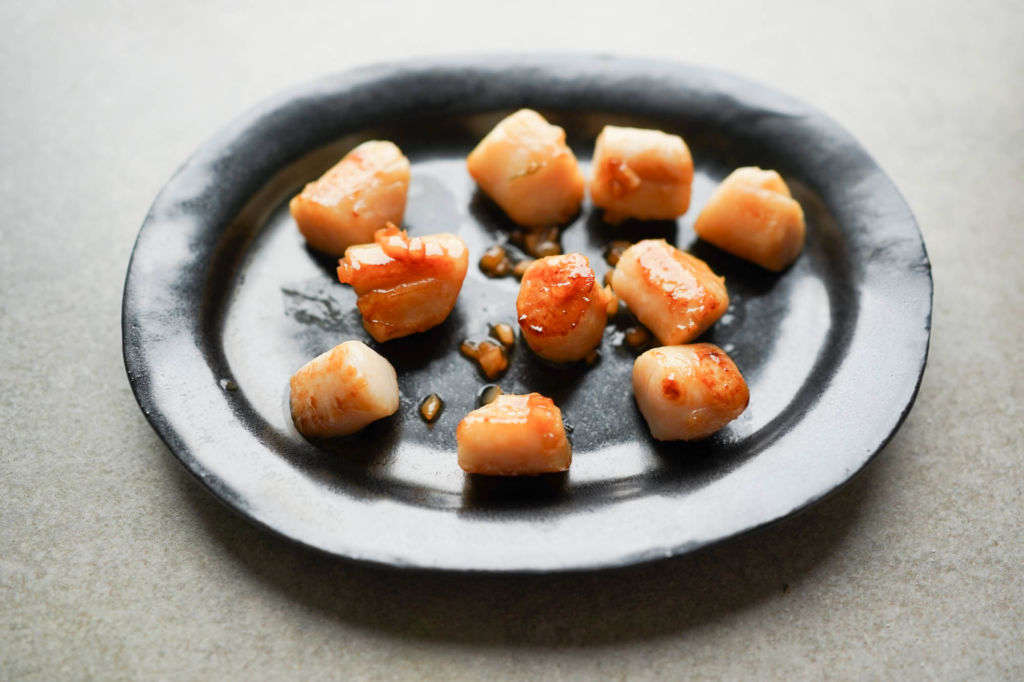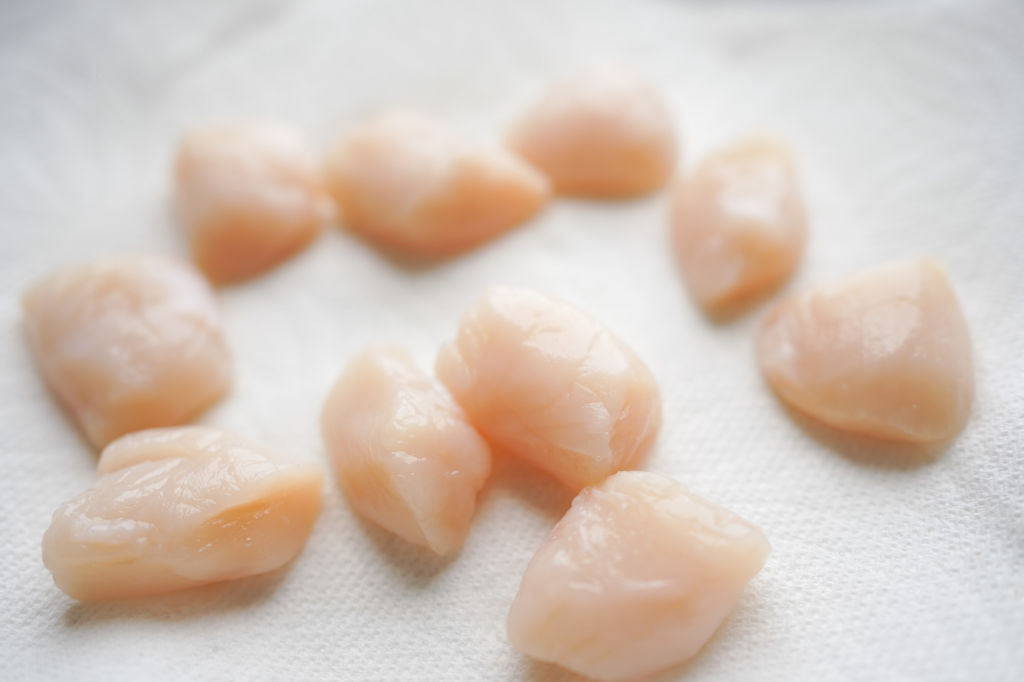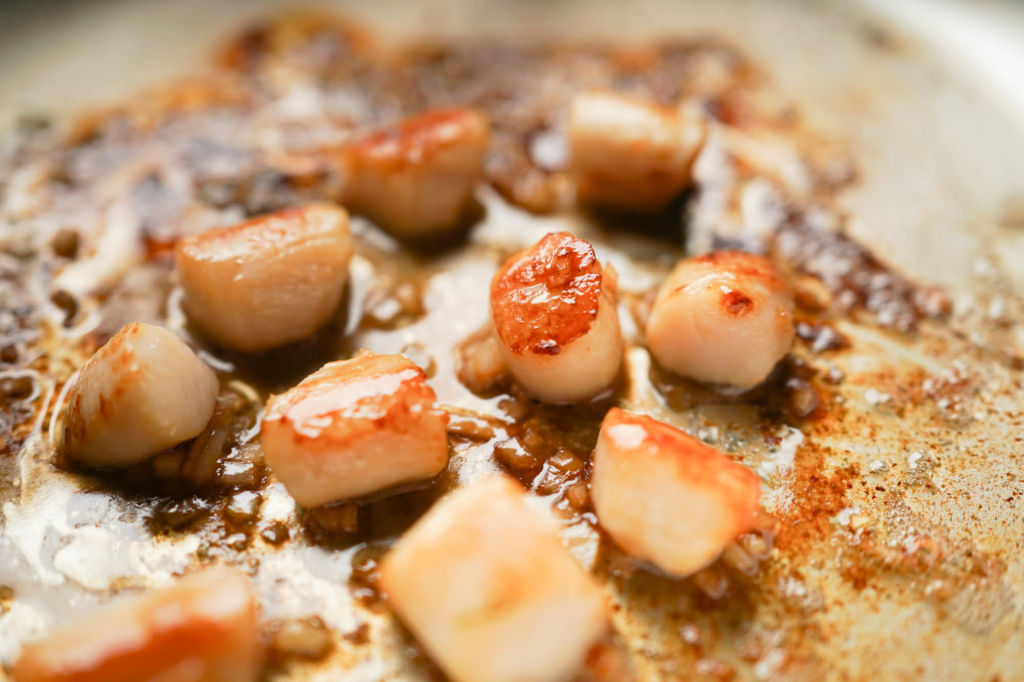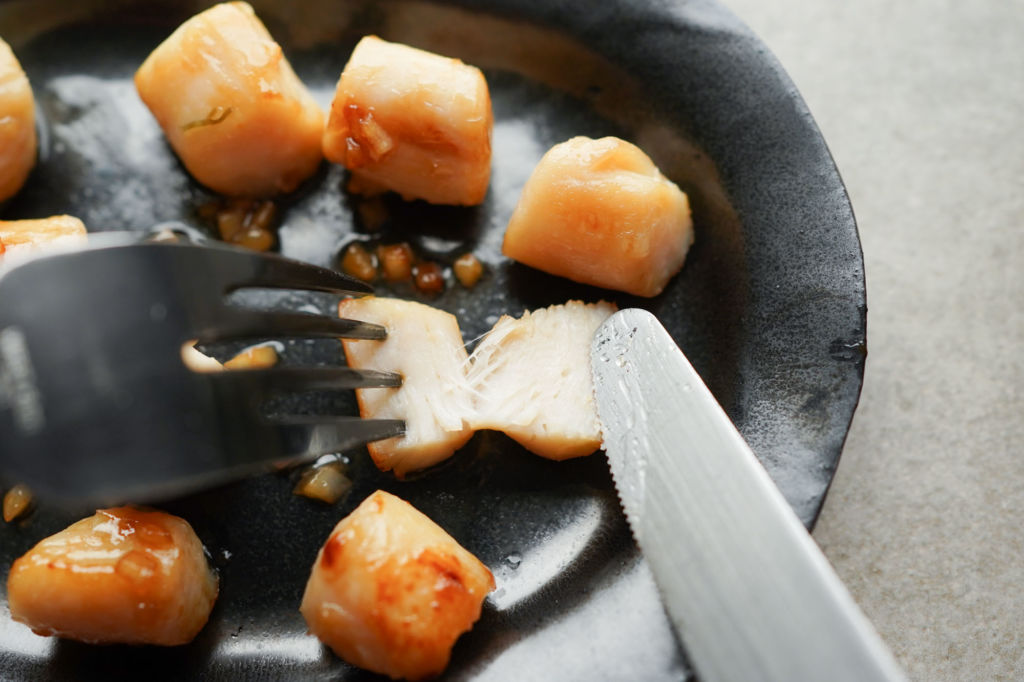What Do Scallops Taste Like?
Scallops are delectable seafood that are sometimes overlooked by their popular cousins lobster, shrimp, and crab. It’s hard not to get addicted to these sweet and nutty mollusks with buttery textures and it’s also no wonder they’re called the “candy of the sea.”

What Are Scallops?
Scallops are part of the bivalve mollusk family that includes other tasty seafood like clams, mussels, and oysters. Bivalve mollusks help filter the water they live in through their large gills and eat plankton, algae, and more.

Scallops typically range in color from creamy white to orange hues. Changes to the type of plankton that female scallops filter can affect the color of their adductor muscles (the edible portion of the scallop).
What Are Scallops Made Of?
Scallops are made up of two parts: two hard outer shells that are connected by a hinge and a soft-bodied invertebrate inside. Part of this soft center is an adductor muscle that connects to both hard shells and is responsible for opening and closing the shells.
Unlike other members of their mollusk family, scallops are able to move short distances by opening and closing their shells and propelling themselves through the water. This motion allows the adductor muscle to grow in large size due to this constant movement.
What Do Scallops Taste Like?

Many refer to scallops as the “candy by the sea” and this refers to their often sweet and slightly nutty flavor. When they’re cooked, scallops have a similar flavor to cooked crab, lobster, or sometimes shrimp. There are over 400 species of scallops throughout the world, but there are 3 main varieties you can find at your local fishmonger or seafood store:
- Sea scallops: These are the largest in size that have an average of 1 ½-2 inches in diameter (and even more in rare instances). They typically have a mild sweetness to them. They are also the most popular and commercially available in the US. They’re harvested in the deeper parts of the ocean and are best seared.
- Bay scallops: These scallops are smaller in size than sea scallops, but are coveted for their sweeter and nuttier flavor in addition to an extra tender texture. Bay scallops are harvested in the cold, shallow shores of the East Coast. It’s recommended to quickly saute or poach these sweet little bites of seafood candy.
- Calico scallops: These are among the smallest size of scallops (100-200 calico scallops per pound) and they are also the most inexpensive. Since their shells are tightly shut (unlike other varieties), they are often steamed first and then shucked, which can compromise their flavor.
What Do Scallops Taste Like When They’ve Gone Bad?
If your scallops suddenly have a very strong scent similar to ammonia, do not consume them. They are most likely spoiled and will make you sick if you try to eat them raw or cooked. Fresh scallops should smell mild with a slight saltwater smell to them, but never overpowering. It’s important to keep scallops below 40 °F to keep them as fresh as possible and prevent them from spoiling.
The Texture of Scallops

Like their flavor profiles, scallop texture can also be different depending on the variety, but for the most part, scallops have delicate and tender textures.
Raw scallops have a rather plump, but delicate texture to them. They’re perfect for those delectable bites of sushi where the scallop’s sweet flavor and delicate texture take center stage.
Cooked scallops are also a delicacy because they still should have a tenderness to their texture that’s similar to crab or lobster. However, it’s important not to overcook the scallops otherwise they will have a rubbery and chewy texture. Some chefs recommend searing scallops to a medium-raw consistency to preserve the texture.
Serve it with some roasted broccoli and cauliflower or some fajita veggies and you’ll have a delicious and super fast dinner.
What Do Scallops Look Like in the Ocean?
When you pick up “seashells” on the seashore, you might actually be imagining scallop shells. These shells typically have a fan-shaped curve to them with ridges spanning from the hinge towards the edges. They come in different colors from brown-orange to white scallops to dark purple scallops and beyond.
You must be logged in to post a comment.